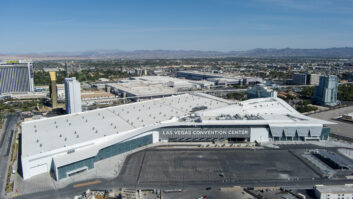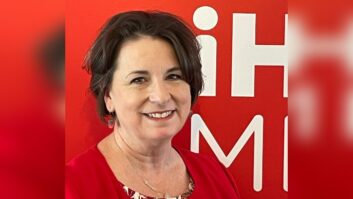How long will the “pause” in standards-setting for HD Radio last?
That was one of the big questions being debated after a decision by the leaders of the DAB Subcommittee of the National Radio Systems Committee in May.
The group “temporarily suspended” standards-setting activities for IBOC (RW, June 4, page 1). The engineers want to see improvement in Ibiquity Digital Corp.’s PAC codec on AM at low bit rates, although they praised the Ibiquity system overall.
Ibiquity has an improvement plan for PAC, but executives said they did not want to get specific about when the issues would be resolved.
Who Owns PAC?Ibiquity’s Perceptual Audio Coder is an audio compression technology used to transmit the best sound possible in a limited bandwidth. Algorithms supporting audio compression are defined as perceptual audio coders and referred to as “codecs,” short for “coder-decoder.”
Codecs allow a dramatic reduction in the bit rates required for digital representation of audio signals. Perceptual audio coding schemes use the signal masking properties of the human ear in order to reduce the amount of data that is transmitted.
PAC was designed by Bell Labs and Lucent Digital Radio, which also developed it for other uses such as Internet music distribution and programmable music players.
When LDR and USA Digital Radio merged and became Ibiquity in 2000, the entity became the owner of patents for both companies. At that time, shareholders of both had stakes in Ibiquity.
Now Lucent Technologies is no longer an investor in Ibiquity. But the company that manages Lucent’s former venture capital interests is. New Venture Partners LLP is Ibiquity’s largest investor, followed by venture capital investors JP Morgan Partners, Grotech Capital Group and Pequot Capital. These four groups were the lead investors in the technology developer’s April 2002 financing. Viacom continues to be Ibiquity’s largest broadcast shareholder.
Ibiquity has begun licensing PAC for other applications besides HD Radio. Sirius is a PAC customer for its radios, for example.
Ibiquity had used MPEG Advanced Audio Coding as its codec. The patent pool for MPEG AAC indludes Fraunhofer, Sony, AT&T and Dolby Labs and others. Ibiquity would need to pay to license AAC again if it switched codecs, sources say.
Company leaders took pains to dispute a report published elsewhere that declared the HD Radio receiver rollout would be delayed until 2004.
Ibiquity Senior Vice President and co-Chief Operating Officer Jeff Jury said, “We’re pushing forward on all fronts. We believe this will be resolved. It will be in the short term.”
When asked to comment on a rumor that the PAC problems would be resolved within 60 days, Jury declined.
Some industry observers believe Ibiquity would make personnel changes as a result of the delay. But when asked whether it was planning to make a change either in the PAC team in Warren, N.J., or at the executive level of the company, President/CEO Robert Struble stated that no changes were planned.
Months?
Experts differed on how long the standards-setting pause might last.
One RF manufacturer doubted it would last as long as a similar pause in DTV standards process; that one took a year and a half. “We’re talking months, not years,” he said.
Jury pointed out that Ibiquity introduced its first field-upgradable software this spring and that PAC improvements may be incremental rather than dramatic.
“The input we’ll get from the market is going to guide us. We will make a series of upgrades going forward.”
Yet several engineers with major radio groups that have invested in Ibiquity say the company has been trying to tweak PAC for some time. They do not think a fix will be quick and said members of the NRSC had been trying to get Ibiquity to focus on the PAC issue.
“The NRSC’s hand was forced. They could not proceed and remain legitimate,” said one source close to the issue.
Some broadcast engineers who participate in the NRSC are being particularly cautious about their station rollouts in light of the pause.
One such engineer whose company has invested in Ibiquity said he asked his manufacturer to halt shipments of two FM transmitters until the situation is resolved.
“We paid 50 percent and told them they can let them go (to another buyer) if need be, and put that money toward the next ones.”
This engineer believes a delayed rollout until 2004 might be beneficial because the industry could make sure HD Radio sounds as good as possible. “The average consumer doesn’t know IBOC is coming or delayed.”
This NRSC member and some others told Radio World they believe Ibiquity cannot make PAC work at the lower bit rates, and that the technology developer should use a newer version of its previous codec, AAC.
They are especially concerned about PAC’s performance on AM including the potential to mangle satellite-delivered programming, which many AMs use. Such feeds are already encoded coming into the station, and some engineers fear the audio quality would degrade through re-coding of that material.
“PAC is only passable at 64 kbps and not great,” said one engineer, close to the NRSC process.
Business models
The DAB Subcommittee of the NRSC doesn’t believe PAC on AM at 36 kbps is suitable for broadcast and has questions about its performance at intermediate levels below 96 kbps for FM. Sixty-four kilobits per second and below is the bit rate stations would need for their main programming if they want to devote some portion of their spectrum for ancillary data services.
But several sources said adding a new codec at this stage is not simple and would affect more than the receivers.
Ibiquity presumably wants to recoups its costs incurred with PAC when it merged with Lucent Digital Radio, said several sources.
Yet, “That’s their business model, not ours,” said one engineer, referring to broadcasters in general. “We don’t want Ibiquity to fold, we just want the system to work right.”
A chipmaker who is also involved in the NRSC stressed that not all broadcasters on the NRSC are unhappy with PAC’s performance on AM. Having heard IBOC using both PAC and AAC codecs, he said, “Audio coding is perceptual. AAC and PAC make different tradeoffs.”
He believes Ibiquity can solve the problem quickly. So does fellow chipmaker Philips.
“We have full confidence that Ibiquity will improve the AM quality and will meet the broadcasters’ expectations and needs,” said Jack Morgan, automotive director for North America for Philips’ semiconductors’ division. “We will announce the availability of our chip solutions for HD Radio in the next quarter.”
Kenwood plans to ship initial HD Radios to retailers in June and ramp up deliveries in August.












